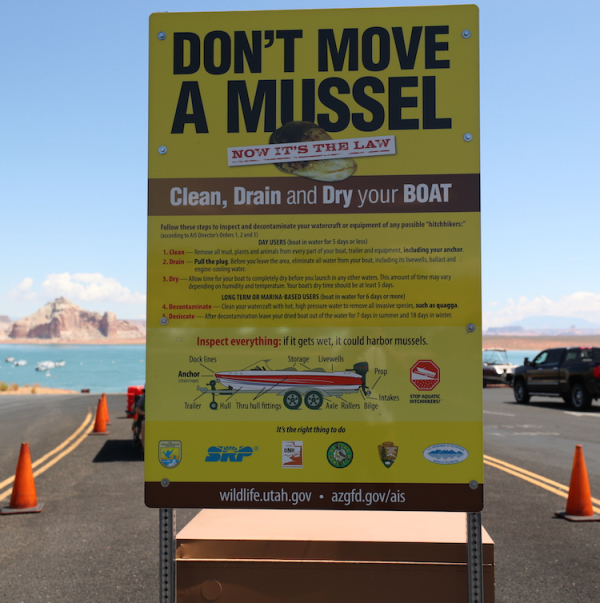
|
Utah Department of Natural Resources officers, Utah Division of Wildlife Resources technicians and personnel from other partner agencies were hard at work inspecting and decontaminating watercraft during the Labor Day weekend. These efforts help to prevent quagga mussels and other aquatic invasive species — including Eurasian watermilfoil — from Lake Powell and from infested reservoirs outside the state from spreading to other waterbodies in Utah.
Aquatic invasive species technicians with the DWR, Utah State Parks, Arizona Game and Fish Department and the National Park Service, as well as DNR natural resources officers, did the following from Friday to Monday:
There are over 40 inspection stations located at various waterbody boat ramps, along highways and at Port of Entry stations throughout Utah. There are also five dip tanks across the state that more efficiently and effectively decontaminate complex boats. The dip tanks are all free to use and are typically close to either the entrance of a state park or near a boat ramp. Dip tanks have been installed at the following locations around Utah:
“More than two-thirds of the total decontaminations performed over the holiday weekend were done by one of our dip tanks,” Utah Department of Natural Resources Law Enforcement Aquatic Invasive Species Statewide Operations Lt. Bruce Johnson said. “They have been an important tool in increasing the efficiency of the decontaminations, and we are grateful that boaters are using them to help prevent the spread of aquatic invasive species.”
DNR natural resource officers also detected a few violations, the majority of which were due to:
Negative impacts of quagga mussels
Negative impacts of Eurasian watermilfoil
Visit the STD of the Sea website for a list of all the decontamination stations around the state and for more information about requirements for boaters and others using nonmotorized watercraft.